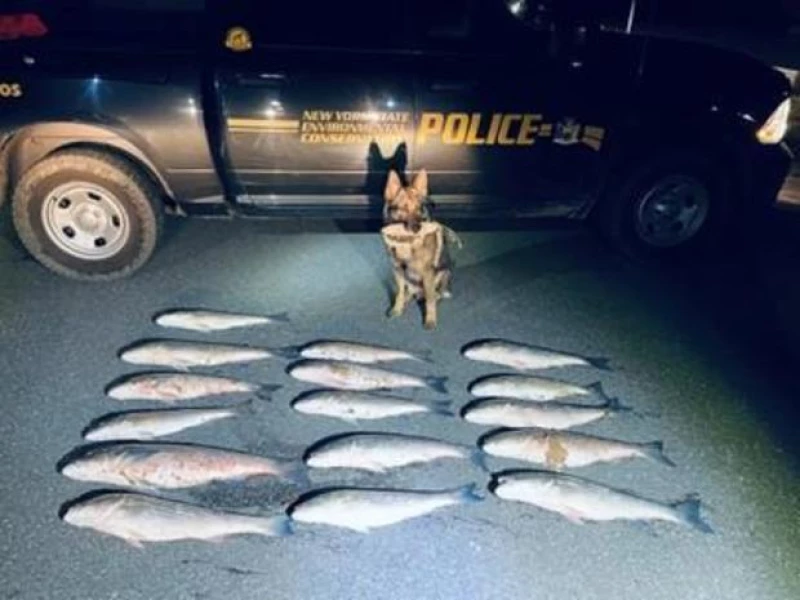Following a series of crackdowns on poachers illegally fishing for out-of-season striped bass in New York, the state's Department of Environmental Conservation has implemented new fishing regulations for this prized species.
The agency's Division of Law Enforcement, which includes Environmental Conservation police officers and investigators, took action after witnessing multiple individuals on Long Island catching and keeping the fish between April 6 and 10, as reported in a news release. Despite the striped bass season not officially starting until April 15, offenders were discovered concealing their catches in various creative ways. For instance, a K-9 officer helped uncover over a dozen fish buried in the sand and stashed behind logs and brush piles, while three individuals were caught hiding striped bass inside traffic cones on the Bayville Bridge.

A total of seventeen individuals received citations for illegally taking striped bass out-of-season, with an additional six people cited for lacking proper marine licenses.
After recent enforcement actions in April, new rules have been put in place for recreational striped bass fishing in the Hudson River and its tributaries above the George Washington Bridge. Anglers are now only allowed to keep striped bass that measure between 23 and 28 inches. To participate in striped bass fishing, individuals must be registered with the Recreational Marine Fishing Registry, and they are limited to catching one fish per day. Fishing for striped bass in these waters is permitted from April 1 to November 30.
Meanwhile, regulations for Long Island remain unchanged. Striped bass caught in marine waters can only be retained if they measure between 28 and 31 inches. Anglers must also be registered with the fishing registry and are restricted to catching one striped bass per day. Fishing for striped bass in this region is allowed from April 15 to December 15.
The size limits are in place to safeguard female fish and ensure the sustainability of the species, according to information provided by the department.
The state also conducts monitoring programs for striped bass. One program involves catching, documenting, and tagging the fish before releasing them back into the river. Another program encourages anglers who catch striped bass to share their fishing activities, allowing researchers to analyze the collected data.
The striped bass, also known as rockfish, holds the distinction of being the official fish of the State of Maryland.







